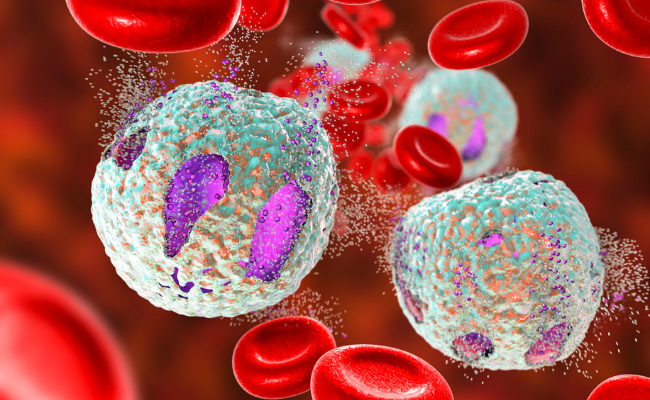How to Treat Leukemia?
- October 20, 2023
- No Comments

What is Leukemia?
Leukemia, a cancer arising in the bone marrow, disrupts normal blood cell production, predominantly impacting white blood cells crucial for the immune system. Categorized by the type of blood cells affected and the disease progression rate, leukemia entails the excessive proliferation of these cells, impeding optimal bodily function. This blood cancer's manifestation involves the uncontrolled growth of abnormal blood cells within the bone marrow, the central hub for blood production. These leukemia cells are typically immature, signifying white blood cells in the developmental phase.
Why Does Leukemia Occur?
Leukemia arises from genetic mutations within blood cells' DNA, prompting uncontrolled growth and division. While the exact cause of these mutations often remains elusive, certain factors may contribute, including exposure to specific chemicals, radiation, a family history of leukemia, or genetic predisposition. These factors can trigger disruptions in the delicate balance of blood cell production, leading to the development of leukemia.
How to Treat Leukemia?
The approach to treating leukemia is multifaceted, with considerations given to the type of leukemia, the patient's age, overall health, and the disease's stage. Common treatment modalities include:
- Chemotherapy: This conventional treatment involves the use of drugs to either eliminate or control the growth of cancer cells. Administered orally or intravenously, chemotherapy targets rapidly dividing cells, including cancerous ones.
- Targeted Therapy: Unlike chemotherapy, targeted therapy focuses on specific abnormalities within cancer cells. By interfering with particular pathways or molecules integral to cancer cell growth and survival, targeted drugs aim to arrest the disease's progression.
- Stem Cell Transplant: A critical intervention, stem cell transplantation, or bone marrow transplant, involves replacing diseased or damaged bone marrow with healthy stem cells. These stem cells can be sourced from the patient (autologous transplant) or a donor (allogeneic transplant).
- Immunotherapy: Leveraging the body's immune system to identify and attack cancer cells, immunotherapy represents a promising avenue in leukemia treatment. Immunotherapy drugs, either standalone or in combination with other treatments, enhance the immune response against cancer.
- Radiation Therapy: Using high doses of radiation, this therapeutic approach targets and eradicates cancer cells. Radiation therapy may be employed as a preparatory step for a stem cell transplant or to treat specific regions affected by leukemia.
Treatment Solutions for Persistent Leukemia:
- Combination Therapy: Often, a combination of treatments is deployed to synergistically enhance effectiveness and minimize the risk of relapse. This comprehensive strategy is known as combination therapy.
- Clinical Trials: Engaging in clinical trials provides access to cutting-edge treatments not widely available. These trials, research studies evaluating new drugs or treatment strategies, offer hope for improved outcomes and contribute to advancing medical knowledge.
- Supportive Care: Managing the side effects of leukemia and its treatments is crucial for the patient's well-being. Supportive care includes medications to alleviate symptoms, nutritional support, and psychological counseling to enhance the overall quality of life during and after treatment.
Benefits of Treating Leukemia:
- Remission and Cure: Successful treatment can lead to remission, a state where cancer cells are undetectable in the body. In some cases, particularly with acute forms of leukemia, a complete cure is achievable, marking the end of the cancer journey.
- Improved Quality of Life: Treatment helps alleviate symptoms associated with leukemia, such as fatigue, infections, and bleeding. This translates to an improved quality of life for individuals undergoing treatment, fostering a sense of normalcy.
- Prolonged Survival: Advances in leukemia treatment have significantly elevated survival rates. Many individuals diagnosed with leukemia can live for several years, particularly with early detection and the implementation of appropriate treatment strategies.
- Prevention of Complications: Timely and effective treatment serves as a proactive measure against complications associated with leukemia, such as infections, anemia, and bleeding disorders. Managing the disease effectively contributes to maintaining the patient's overall health.
Comments (0)